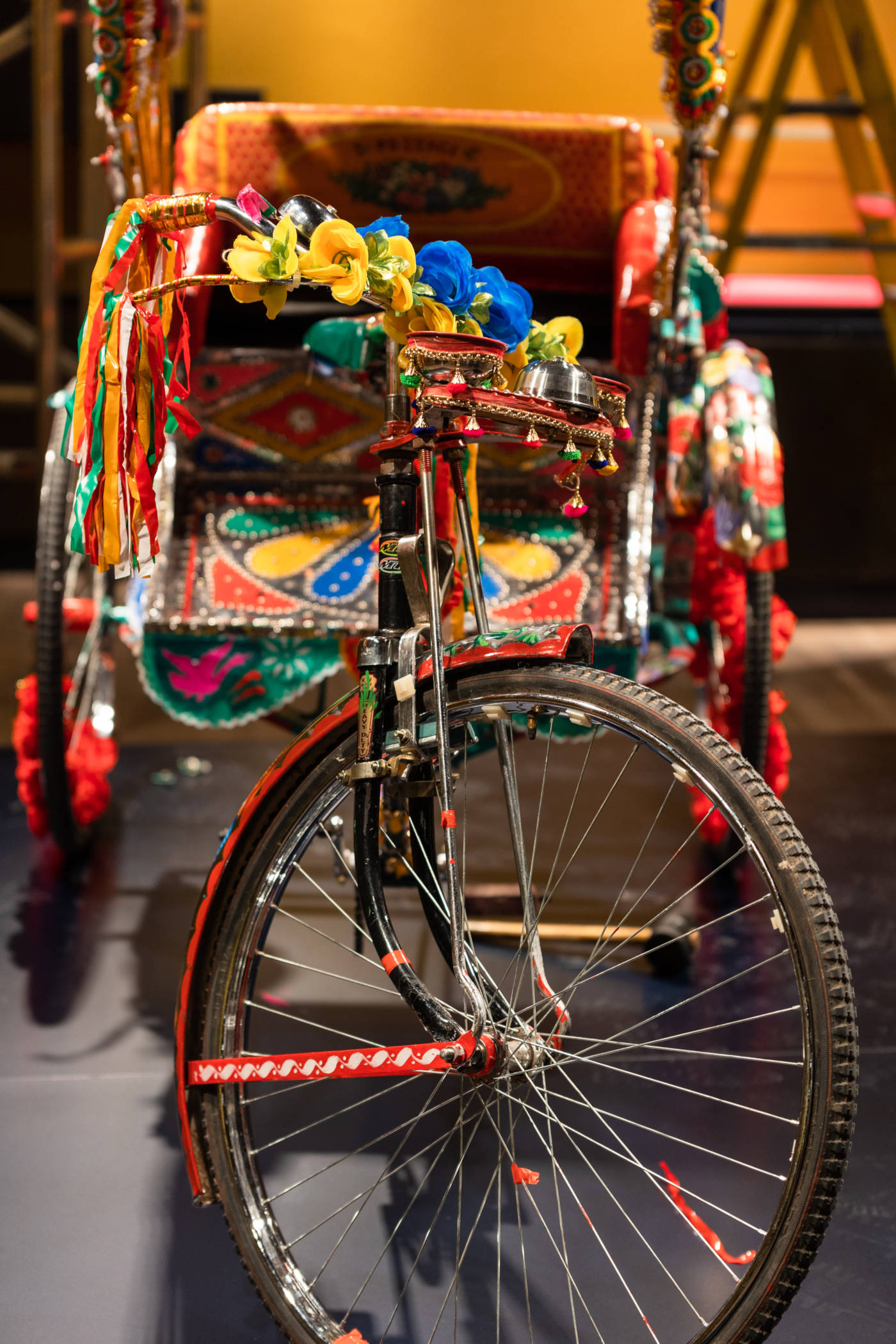
in English original
This object has been translated into 11 different languages by 12 different users
Manchester Museum has been working with artists and communities to make a rickshaw to display in the South Asia Gallery. Rickshaws are a major form of transport in many countries in Asia, and are often brightly decorated like this. Rickshaws, like bicycles, do not need petrol to run, as they are pedal-powered and a green source of transportation.
Inspiration for the decoration on this was drawn from many movies from across South Asia, such as White Sun from Nepal, Paradesi from Sri Lanka, and Lunana from Bhutan.
How do you usually travel around?
Do you have something you’d like to say, in your own language or English, about the object or translation? We’d like to hear what you think.
Translations are community-sourced and for anyone to participate in, however you use your language. For more information, see Community Guidelines.
31 Oct, 2023
Picture from a Rickshaw-making workshop at Manchester Museum.
20 Apr, 2023
There is an image from the National Museum of China with a caption describing rickshaws:
“Rickshaws were initially introduced to China from Japan. They were widely used in towns and cities. At first the wheels were made of iron, but at the end of the 19th century they were replaced by rubber wheels. Since 1913, all the bodies of rickshaws in Shanghai had been painted with yellow tung oil or yellow lacquer. Since then, rickshaws have flourished in the city for their ease of hire and low fares.”
20 Apr, 2023
Here are the original Chinese text and a link to see the image:https://www.chnmuseum.cn/zp/zpml/201812/t20181218_24272_wap.shtml
人力车最初由日本传入中国,故亦称“东洋车”。曾广泛流行于大小城镇。开始车子双轮为铁制,19世纪末改为橡皮车轮。从1913年起上海人力车车身全部漆上了黄色桐油或黄漆,因此又称为“黄包车”。此后城市中人力车以雇用方便、车资低廉而久盛不衰。照片中所摄为民国年间北平一人力车聚集处,其中一些车上已经有乘客入座了。
Wikipedia on this:https://zh.m.wikipedia.org/zh-cn/%E9%BB%83%E5%8C%85%E8%BB%8A
人力车,又称作黄包车,或者东洋车,洋车,是一种依靠人力的交通工具,一般有两个轮子,上有座位可坐一到二人,由一个人在前面拉行(也有的洋车后边有人推) 人力车主要在19世纪末到20世纪初,汽车尚未发达的时代,在亚洲各国的城市地区作为主要的交通工具。20世纪后半以后其交通工具的功能,逐渐被三轮车或机动三轮车所取代,现在主要是在观光景点使用。
31 Mar, 2023
How do you usually travel around?
I like travelling around by the good old-fashioned way – walking. It is my favourite thing to do.
Walking is not only one of the easiest ways of exercise, but it is also a great benefit for mental
health and wellbeing. More specifically, I have noticed that walking helps me relax and reduce
stress during the day. Walking outdoors, also, exposes people to natural sunlight and removes
the risk of seasonal depression, which usually occurs in fall and winter and personally, I find
it extremely important. Lastly, it costs nothing and helps me explore the beautiful city of
Manchester and its architecture.